9 Days Chengdu to Yushu Tour
This Chengdu to Yushu tour mainly includes all the best places in Kham Tibetan region including home stay in Danba, horse back ride in Tagong, sightseeing in Dzongsar, Derge, Yushu.etc. A great combination of culture and nature of Tibetan Plateau.
Day 1: Chengdu - Danba County (1900m) 350km 5 - 6 hours
Drive to Danba via some of the Gyarong Tibetan Towns and Dujiangyan. Danba is the Chinese name of Rongdrak county of Gyarong Tibetan region in far eastern Tibet. Danba or Rongdrak is also famous for its beautiful Tibetan houses with typical ancient Tibetan architecture resemble tall fairy castles with their decorated watch towers and arrow shaped turrets, some of them have recently been converted into guesthouses. Stay overnight at a Tibetan owned home guesthouse.
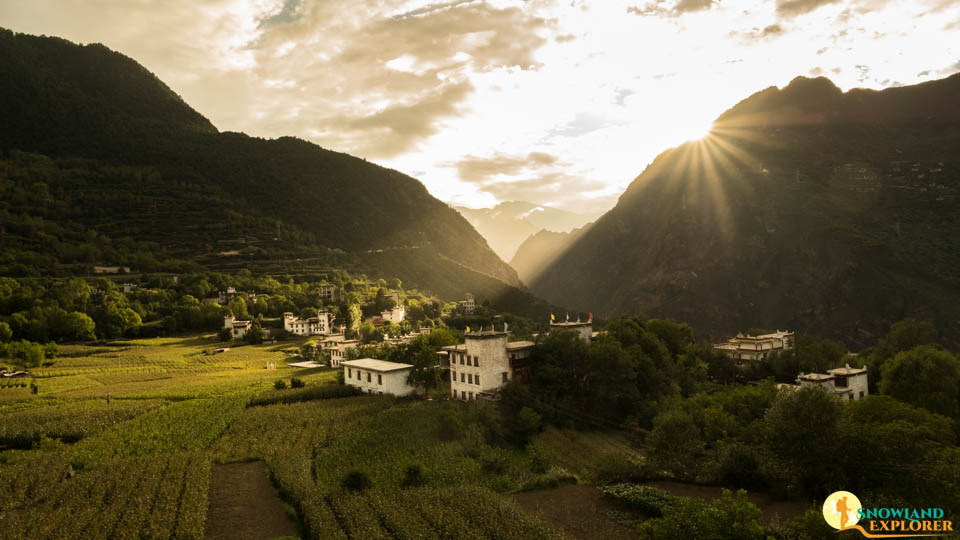
Day 2: Dartsedo - Lhagang / Tagong - Ganzi [3394m] 340km 5-6 hours
In the morning, drive to Ganzi or Gyantse via Lhagong. Lhagong or Tagong is a beautiful nomad town lies about 3700m above sea level, there are two place you can stop in this town. First we visit Lhagong monastery. This golden roof temple is the landmark of this small town. Continue drive about 5km, another magnificent building appeared on the grassland. This is a big group of white stupa surrounding a Giant Golden Stupa. From this Stupa temple, you can see Yala Mountain or Drara Mountain which is a snow peak rises into the clouds. This is definitely one of the highlight of the trip.
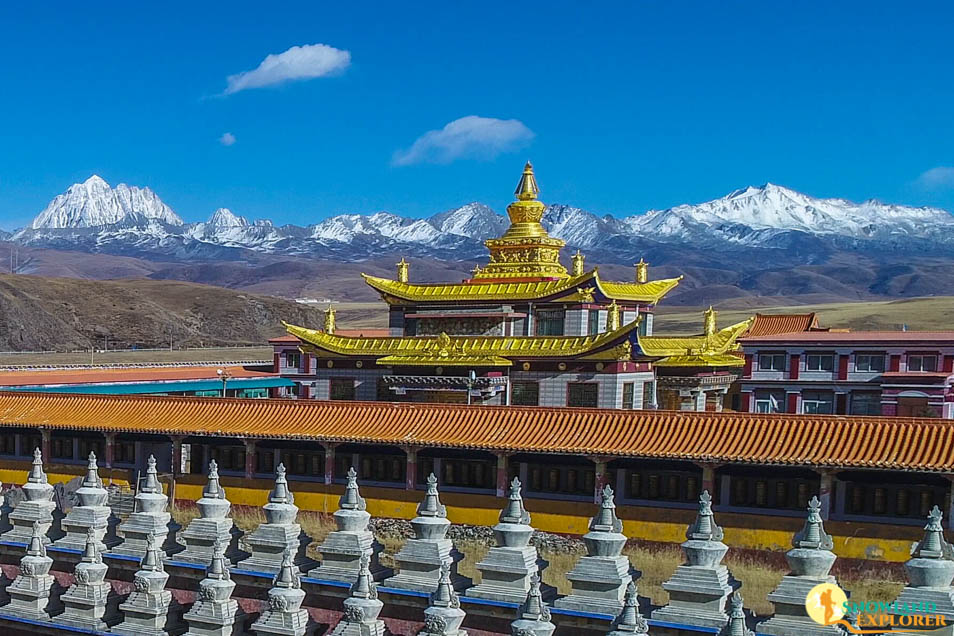
Lhagong Monastery or Tagong Monastery belongs Sakya sect of Tibetan Buddism, and is said to have been established in the seventh century by 32nd king of Tibet Songtsan Gampo, when one of two statues of Śākyamuni she was transporting to Lhasa asked to remain there. It was converted to Karma Kagyu in the eleventh century, and then to Sakya in the thirteenth.
Day 3: Ganzi - Dzongsar Monastery [3354m] 310km 6 hours
Drive from Ganzi to Dzongsar monastery. The first part of the road is open valleys and green grassland. There are some rocky and red clay mountains on the way. Then last part of the road parallel to the Yangtze river and after some 30-40km, the road will lead into a gorge with another tributary of Yangtze river. This deep valleys are covered by forest and beautiful in the summer or autumn. You will pass some traditional villages before reaching Dzongsar. If time allows, visit Dzongsar monastery which is located on the ridge of the mountain behind Dzongsar village. Dzongsar Monastery was founded in 746 by a Bonpo lama. Located on a promontory overlooking the great Khamje Valley in Derge, the monastery is the birthplace of the Khyentse lineage. Dzongsar is consists of Dzongsar Tashi Lhatse Monastery, Dzongsar Shedra and Dzongsar Tibetan Hospital. Dzongsar monastery is located on the hilltop of Tashi Lhatse. And the Shedra and Hospital are located just below the hill. We will stay in a Tibetan courtyard house which converted to guesthouse.
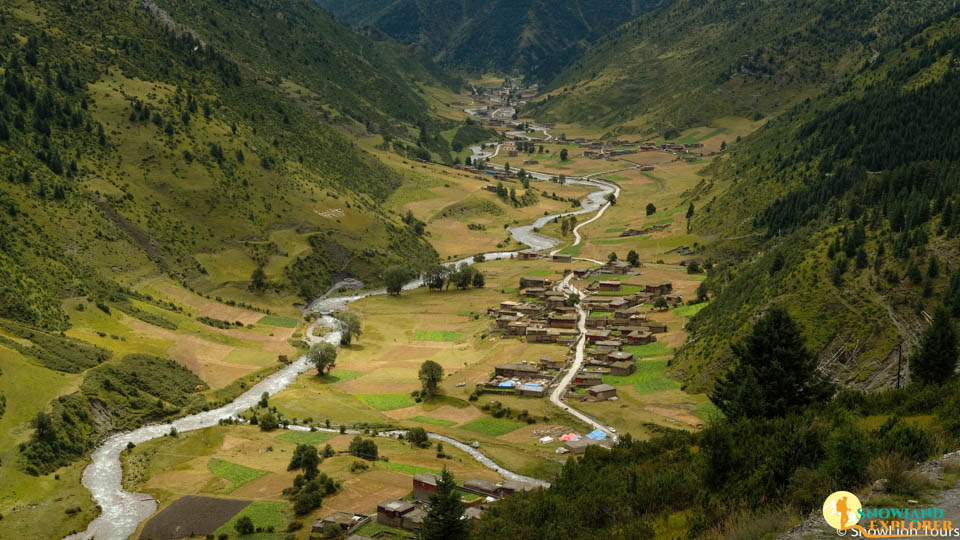
Day 4: Explore Dzongsar
Dzongsar is known for many traditional crafts and arts. Some of the traditional skills still exists are black pottery, traditional Tibetan knife, Thangka Paintings, Coppersmith skills.etc. We will visit few of these art workshops to see how they made them. If you drive into the Dipu valley, you can visit a buddhist learning center on the left. If you are interested in walk, you can continue drive into the valley and enjoy walkings in the forest and small lakes.
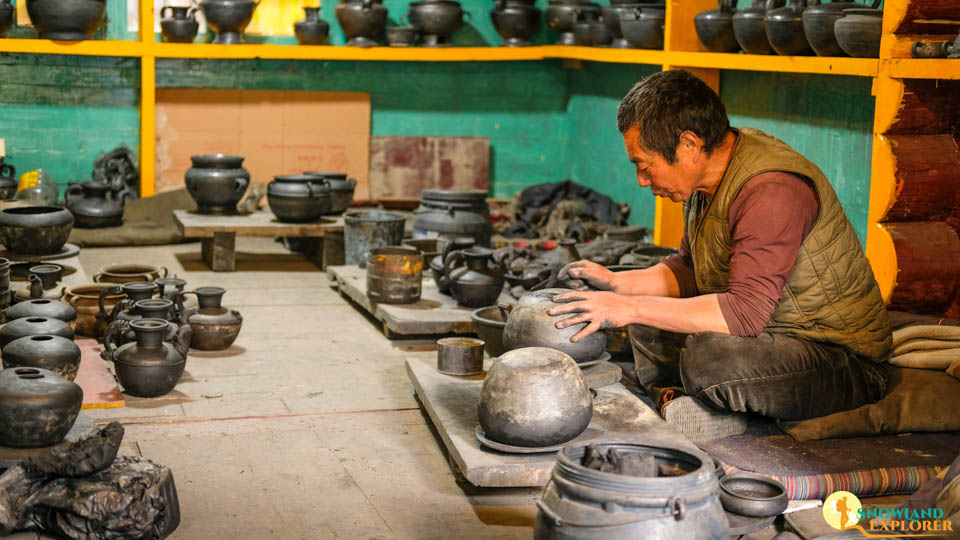
Day 5: Dzongsar - Pelyul - Derge [3270m] 180km 5 hours
In the morning continue drive to Derge through the bank of Yangtze river. On the way we will make a detour to visit Pelyul Monastery in Baiyu County. Pelyul Monastery or Baiyu Si lies alongside the mountain slope behind Baiyu town. Pelyul Monastery is also known as “Palyul Monastery” and in Tibetan means “auspicious land”, is one of the 6 Great Nyingma monastery of Tibetan Religion. It was built in 1665 by Lhachen Jampa Phuntsog, the first Dharma King of Derge. After lunch we will continue our way to Derge County. Once we arrive Dege. We will visit Derge Parkhang or Dege Printing House (Tib. Dege Parkhang), is located in Gengqing Temple in Dege County on the east bank of the Jinshajiang River northwest of the Ganzi Tibetan Autonomous Prefecture. This Printing House was by Chokyi Tenpa Tsering (1687-1738), the 12th headman and 6th dharma-raja of Dege. In the house are kept more than 200000 blocks of religious, historical, literature and art, medical, astronomical and calender-arithmetical book edititons in Tibetan. The Derge Gonchen is connected to Derge Parkhang, so we will visit main temples of the monastery.

Day 6: Derge - Yilhun Lhatso - Manigango - Dzogchen Monastery [4120m] 180km 4 hours
Continue drive in the valley along the tributary of Yangtze River. Before reach to the tunnel of Mount Chola, we will stop at rock paintings where both sides of the cliffs are carved and painted buddha and Bodhisattvas images. Once you come out of the tunnel, a beautiful landscape will draw your attention. This is the Yilhun Lhatso Lake. We will visit the lake, This sacred and beautiful glacial lake is nestled amidst the rocky, snowy Chola Mountains of Trola range. Offering beautiful sceneries. On the shores of this lake one can find dozens of religious, carved prayer stones, as this is a holy lake. The stunning alpine lake is said to provide meditation opportunities for those who wish to achieve enlightenment.
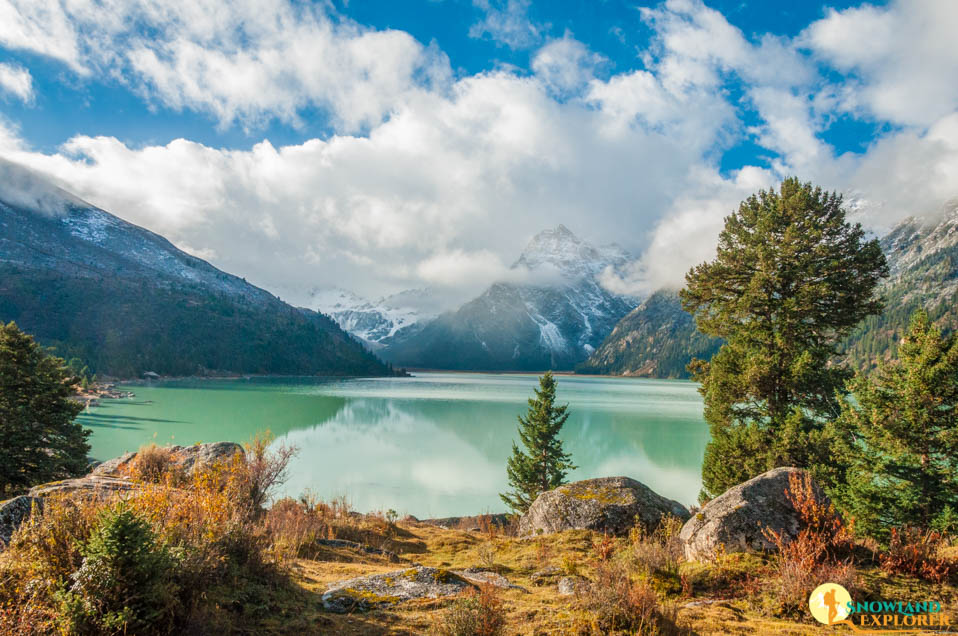
Then we will pass Manigange town and reach to Dzogchen. Dzogchen monastery located on a flat land called Pema Thang which means the land of lotus, also refer to the the meditation place of Guru Rinpoche Padmasambhawa. Dzogchen means perfection of Practice, is one of the Six Great Seats of the Nyingma school, the Old Translation school of Tibetan Buddhism. It is the most important and influential institution of the Dzogchen lineage. Dzogchen Monastery is very large monastery with several magnificent temples. The monastery decided into two, one is Shadra which is studying institute and one is Drudra which is meditation center. Many famous Tibetan buddhist masters had or have been meditated and reached great levels in this valley. This monastery have been expanded a lot in the past 10 years.
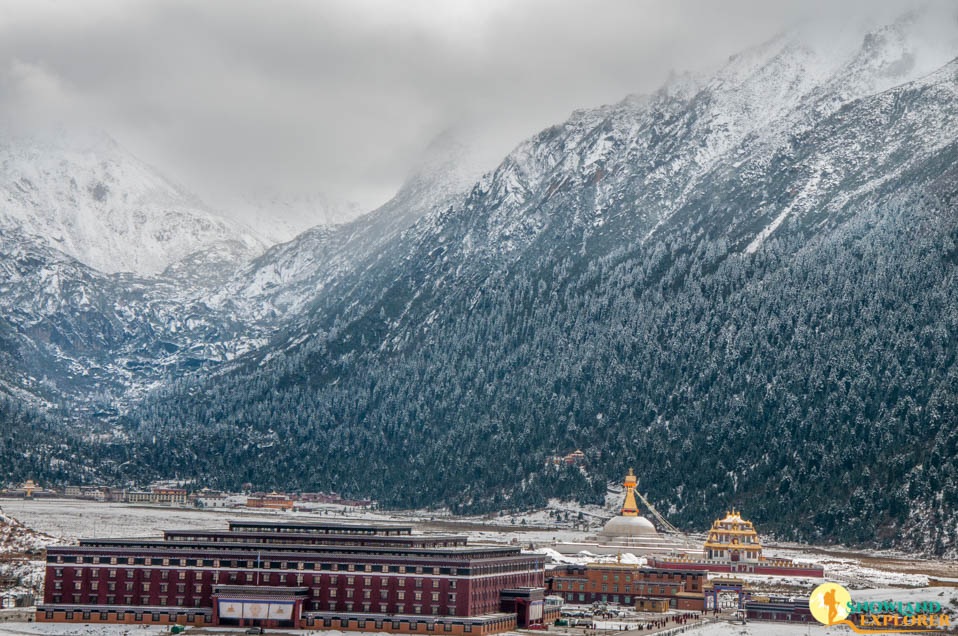
Day 7: Dzogchen - Shechen Monastery - Sershul Monastery
Today, we drive from Dzogchen Monastery continue towards east to Sershul. We will make a detour to Shechen Monastery which is located about 60km away. We will take the narrow but beautiful road which leads us to Shechen Monasgtery. The monastery located in a valley and a big river cut the monastery into two parts. Shechen was founded in 1695 by Shechen Rabjam Tenpé Gyaltsen who was sent to Kham with this purpose by the Fifth Dalai Lama. It became extremely influential in the 18th and 19th centuries, with up to 160 satellite monasteries dotting the hillsides. Then drive to Sershul. Sershul monastery. Serhul Monastery is a Gelukpa monastery lies on the beautiful hillside with bending river a front. This is the biggest monastery in Sershul area which hosts more than 500 monks at the present. There were 1500 monks in it’s peak in 19th century. This place also offers great hiking opportunity on the mountain behind the monastery. This monastery holds daily buddhist philosophy debating session around 4pm which is something you should not be missed.

Day 8: Sershul Monastery - Yushu (3710m), 110km
Drive to Yushu town which located 110km west of Sershul and takes about 2 hours. We will stop old Yangtze River bridge and then visit Lebagou Valley. This beautiful valley offers great hiking and walking opportunities. You can see many Mani Stones (Prayers are carved on the stone) in the river as well as river banks as you walk along the river. After walk 1-2 hours, we will take the car and make a detour to Nambanangdze Temple which is also called Princes Wencheng Temple recent years. This temple is one of the oldest temple in the region which date back to 7th century.
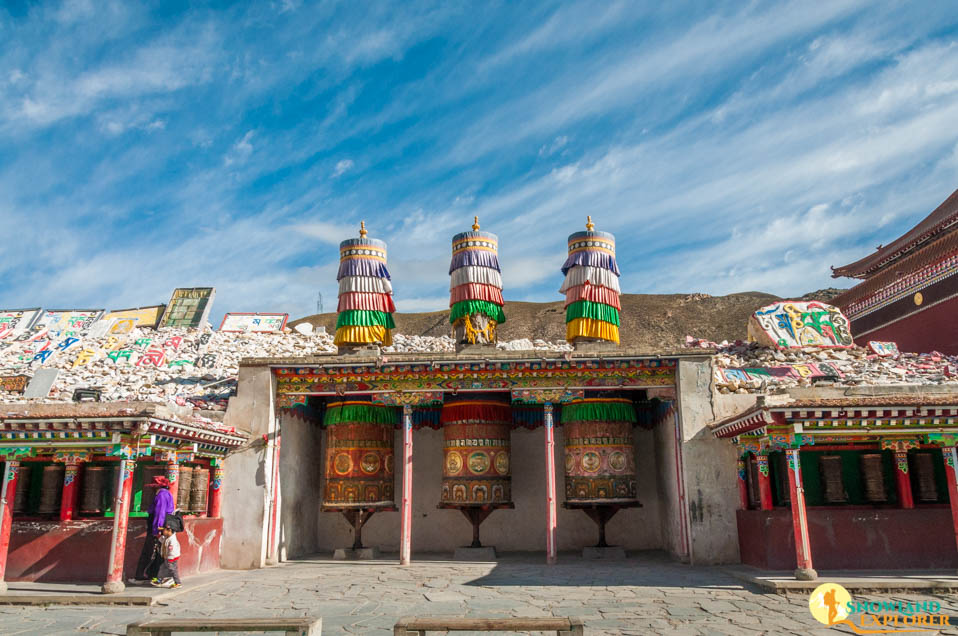
Day 9: Explore Yushu and fly back to Xining or Chengdu in the afternoon.
In the morning, visit Jyegu / Gyegu Monastery on the hill top behind the town and Gyanak Mani Stones at the end of town. This is the best place to overlook the whole Yushu town. Jyegu Monastery had been the site of an ancient Bon temple, before Kagyupa temples were built alongside it. Then when Dragon Phakpa passed through in the course of his travel in 1268. He consecrated the site for the construction of a Sakya tradition monastery. Today Jyeku Monastery consist with 16 temples and home to more than 500 monks.
Afterwards, we drive east side of the town to visit Gyana Mani Stone Pile which is the largest Mani Stone in the world, therefore, it received a Guinnes World Records. Mani stones feature carved and painted Tibetan Buddhist mantras. At the Mani Stone Pile, mountains of rocks are stacked upon each other, and carvers sell mani stones nearby if you’d like to contribute to the pile. Pilgrims come from all over to circumambulate the stones. After lunch, we will drop you off to Yush Airport and say goodbye to your guide and driver.
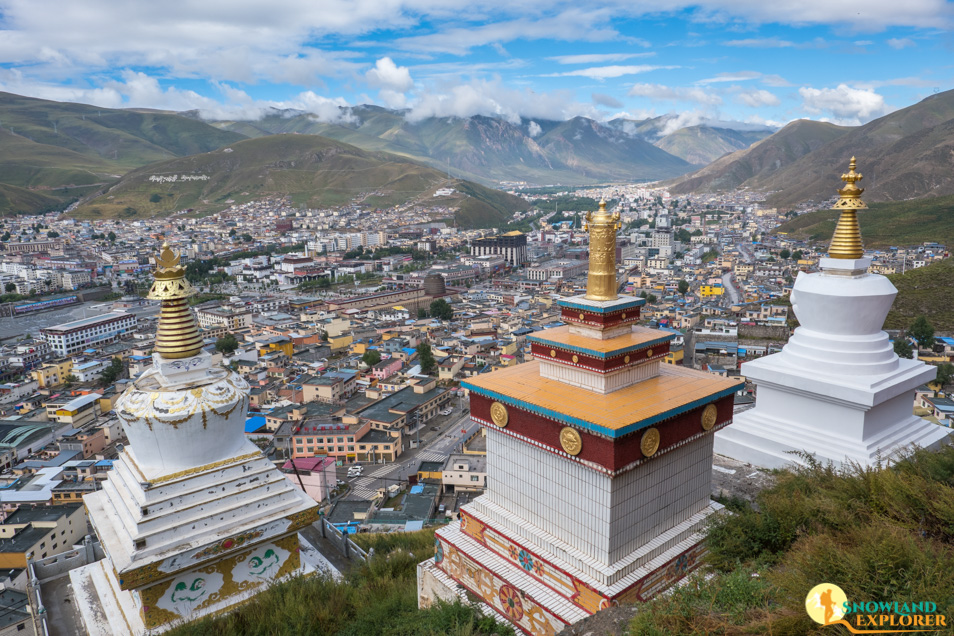
Options to extend your trip:
- Continue your trip and drive all the way to Xining in 2 days. Xining is the capital city of Qinghai Province and the largest city on Tibetan Plateau. Along the way, you can see Mount Amnye Machen, Qinghai Lake, Kumbum Monastery.etc.
- Extent your tour by 2-3 days to visit Nangchen which is located 200km southwest of Yushu. You can visit Surmang Monastery, Gaden Monastery, Gar Monastery.etc. These monasteries offer great landscape view of the region.
- Extent by 3 days to drive through Sanjiangyuan Wildlife Reserve, Chaka Salt Lake, Qinghai Lake, Kumbum Monastery.etc.
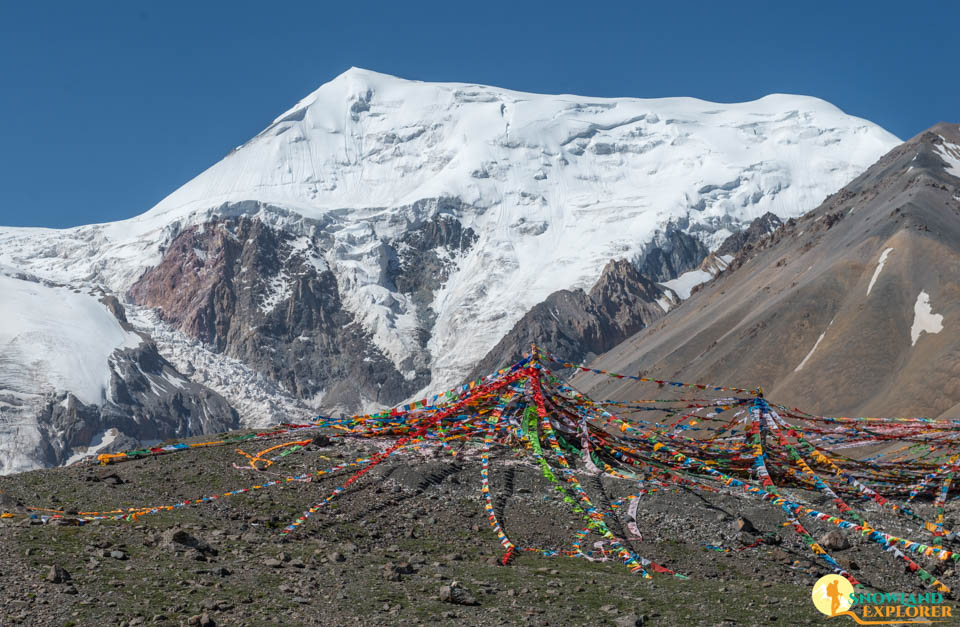
-
DepartureChengdu
-
IncludedAirport pick up and drop offTibetan English speaking guidePrivate vehicleAccommodationEntrance ticketsLiability insurance
-
Not IncludedYour food (lunch and dinner)Plane/train ticketsTravel insurance (recommended to purchase in your home country)Tips for driver and guide
-
Maps
Similar Tours

7 Days Sichuan Tour
Leshan, Mount Emei, Huanglong Park, Jiuzhaigou Park
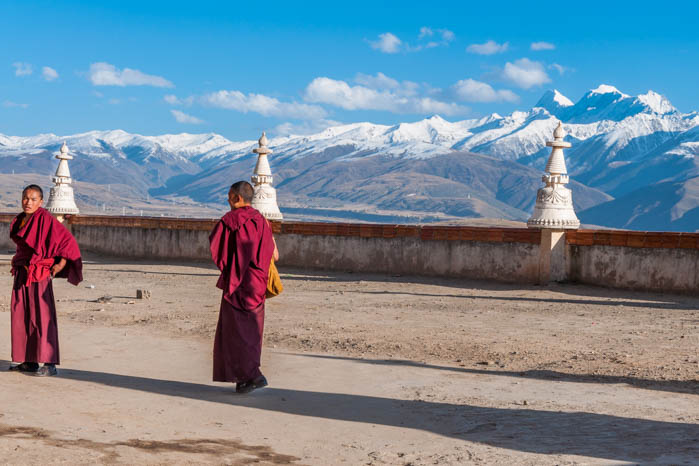
10 days West Sichuan Tour
Kham Tibet, Monasteries, Lakes, Snow Mountains
.jpg)
-2.jpg)


.jpg)
.jpg)
.jpg)
.jpg)
.jpg)
.jpg)